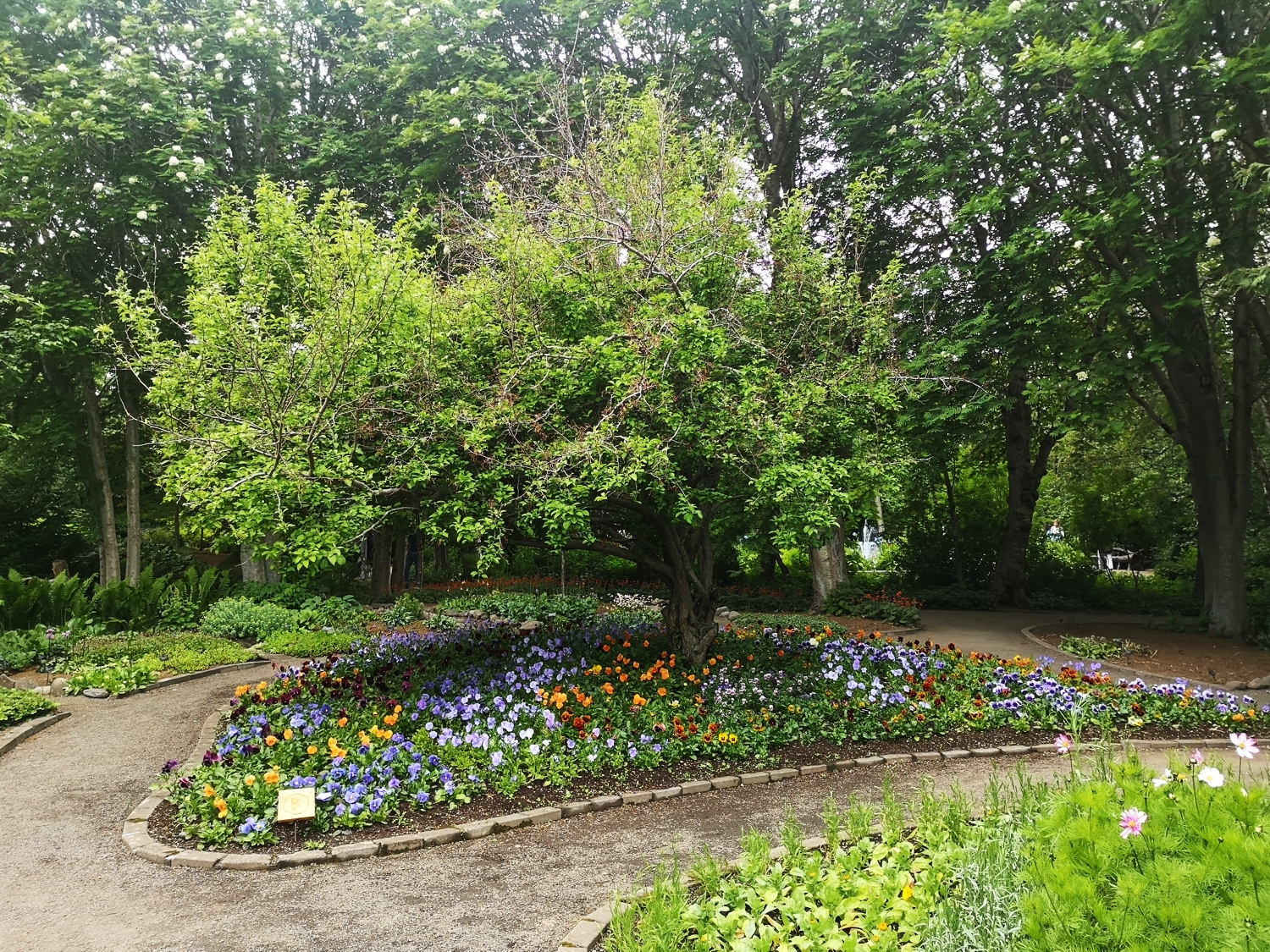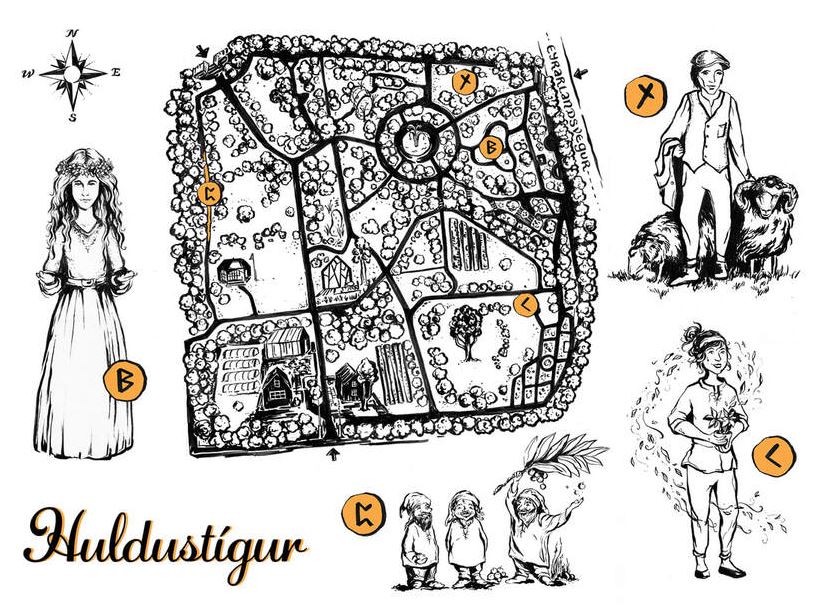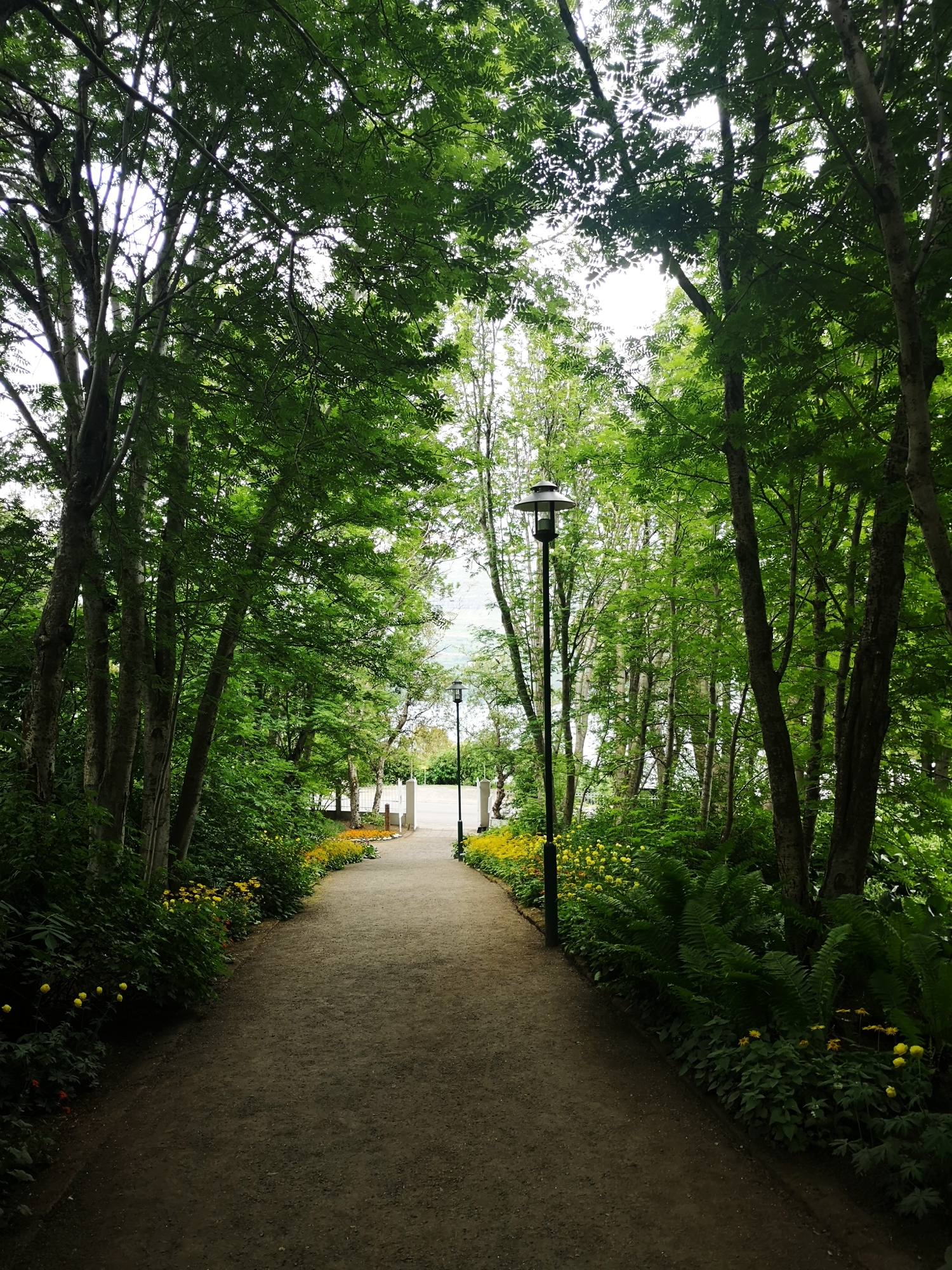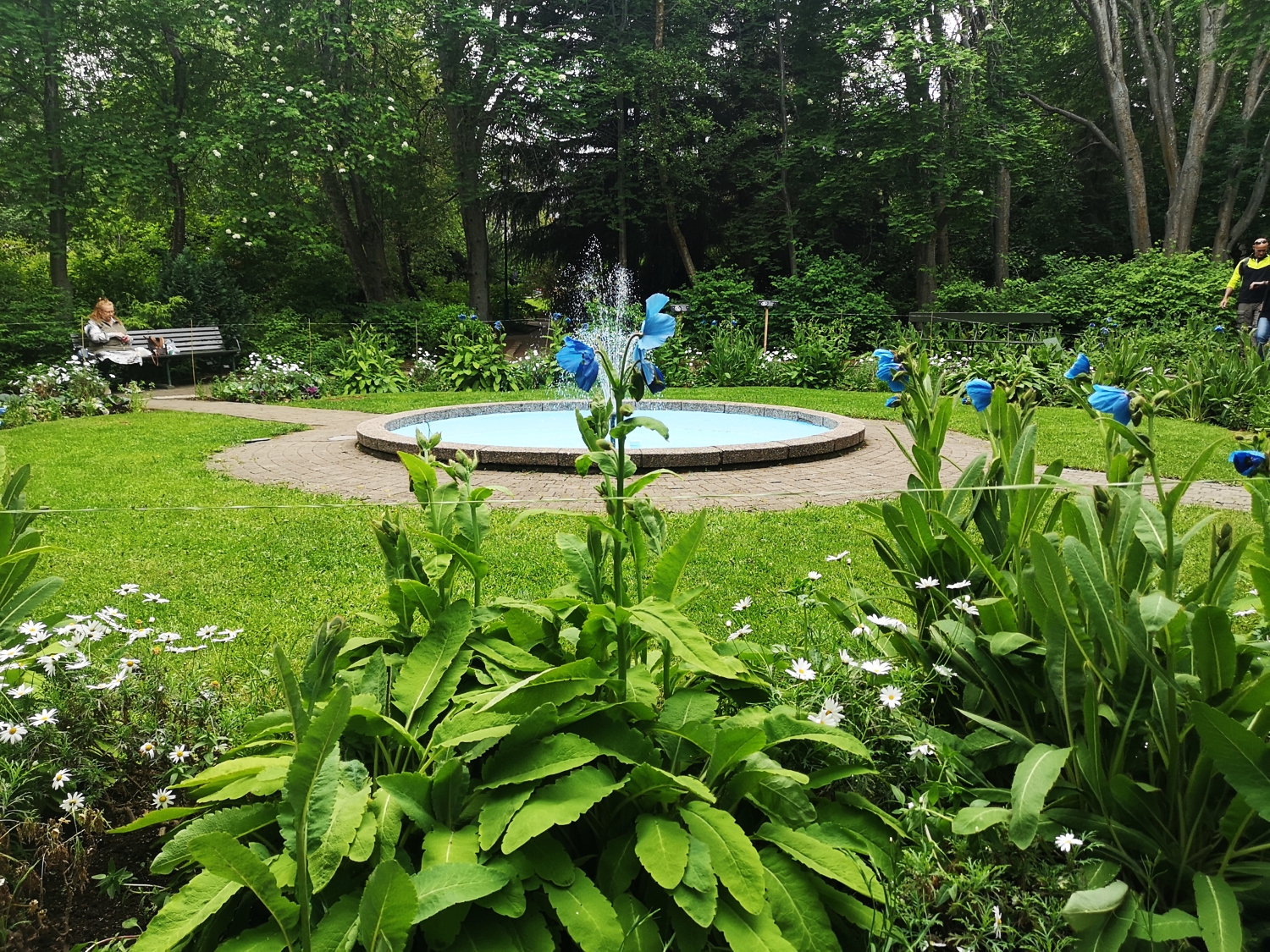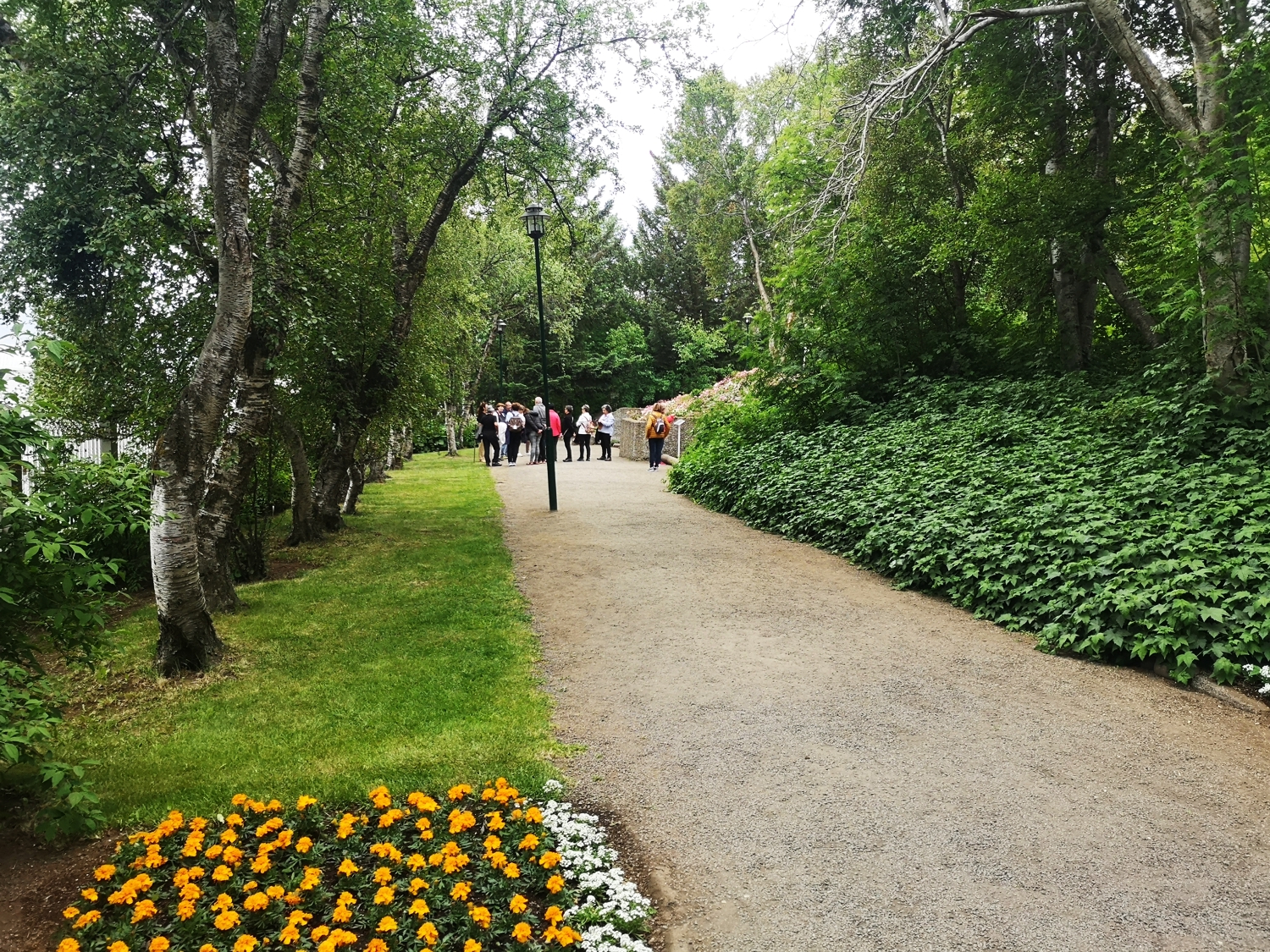Article by Fanney Ingvadóttir:To continue from the previous article on the Hidden People of Iceland we move to the Botanical Garden of Akureyri, Iceland. According to an advocate for nature, Bryndís Fjóla Pétursdóttir the Garden teems with an array of hidden creatures.
Some of these mystical inhabitants are permanent residents, while others reveal themselves when the flora blooms. Among the remarkable denizens is a hidden woman, named Pia, who tends to the Siberian apple tree year-round (marked on the map with a B). Her tree, which originated from a seed donated to Iceland by the Agricultural University of Ås in Norway, enticed her to follow its journey to Iceland, ultimately choosing to make it her home. The woman's uniqueness lies in her radiant health and luminous presence, making her tree an ideal place for visitors to offer prayers and seek guidance. Bryndís has mapped the Garden and created a trail of the Hidden People (Huldustígur). The map portrays the locations of Elves and Hidden beings who are open to engaging with humans. Not all Hidden People within the park are inclined to cooperate or partake in conversation, hence their omission from the map.
Despite potential skepticism, it is noted that only a small percentage of the population openly admits to encountering Hidden People. However, Bryndís believes that anyone can perceive their presence, suggesting that these beings could be considered as manifestations of energy, as everything in the world fundamentally consists of energy. She emphasizes that Icelanders should take pride in their inherent connection to nature, viewing it as an integral part of their national heritage, which should be celebrated and openly shared.
It is worth noting that the project, Huldustígur, follows in the footsteps of a previous endeavor that mapped hidden beings in Akureyri. The ultimate vision is for Icelanders to lead the way in teaching the world how to connect with nature and all its elements, becoming ambassadors of shared experiences.
Akureyri Botanical Garden
The Akureyri Botanical Garden is located 50 kilometers south of the Arctic Circle in the longest fjord of Iceland, Eyjafjörður. Renowned as one of the northernmost botanical gardens globally, it offers a remarkable natural setting.
In 1910, the Park Association was established by women from Akureyri with the aim of enhancing the beauty of their town. The following year, the town generously allocated them one hectare of land, which became the site of the first public park in Iceland.
The Park Association oversaw the garden's development until 1953, during which time the area expanded to 3.6 hectares. Beyond its role as a serene and tranquil environment, the garden serves as a hub for scientific research, providing valuable insights into the survival of shrubs, trees, and other plant species on the fringes of the Arctic. Remarkably, the garden houses around 7,000 plant species, including approximately 400 species native to Iceland.
The Public Park and Botanic Garden is open from 1st of June to 30 September. On weekdays from 08-22 and at weekends from 09-22. The garden facilities are closed over the winter, but visitors are welcome to come for a stroll, the gates are open.
Source:Akureyri.net, Wikipedia
Map: Bryndís Fjóla Pétursdóttir
Photos: Halldór Jóhannsson

